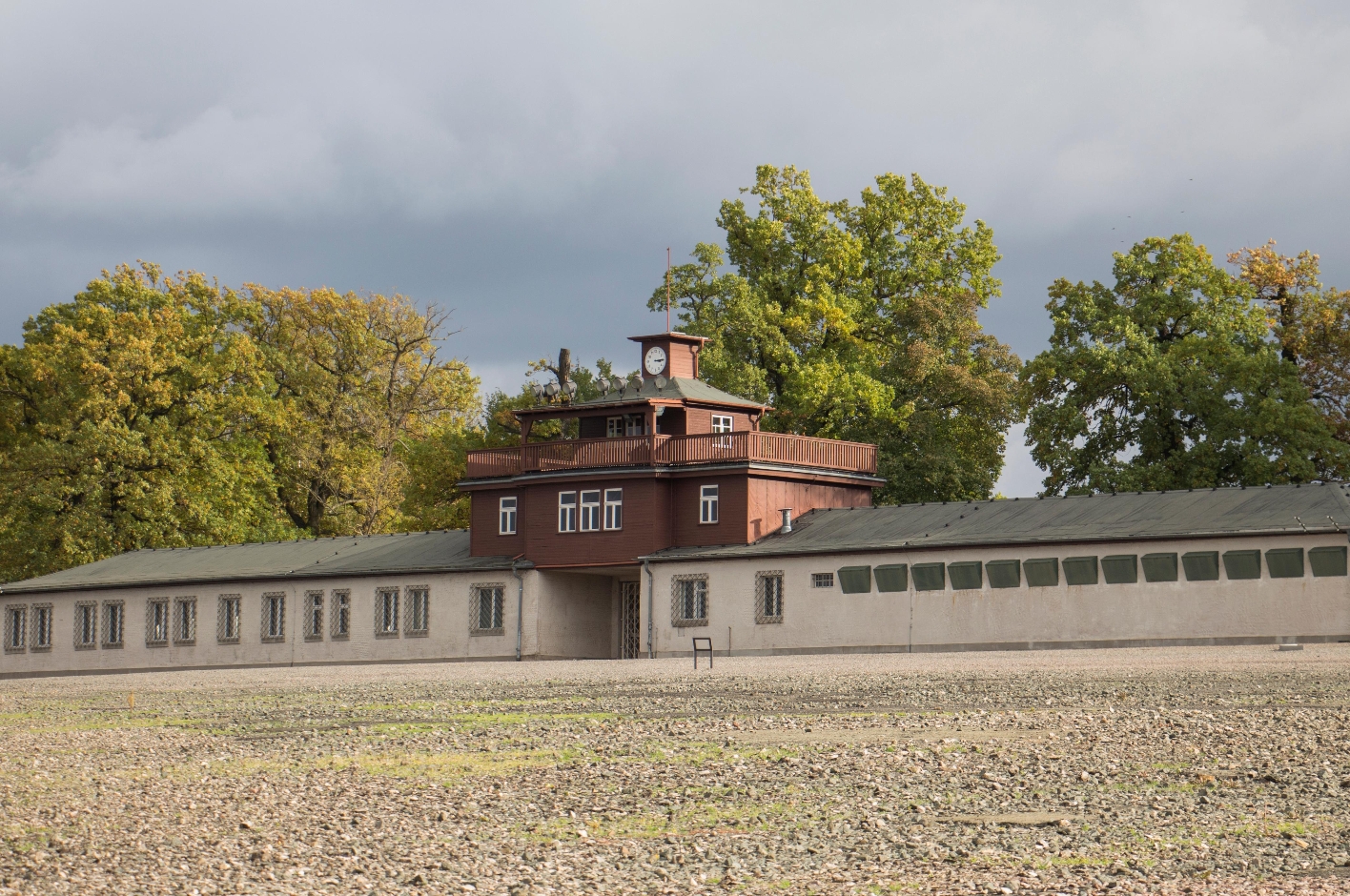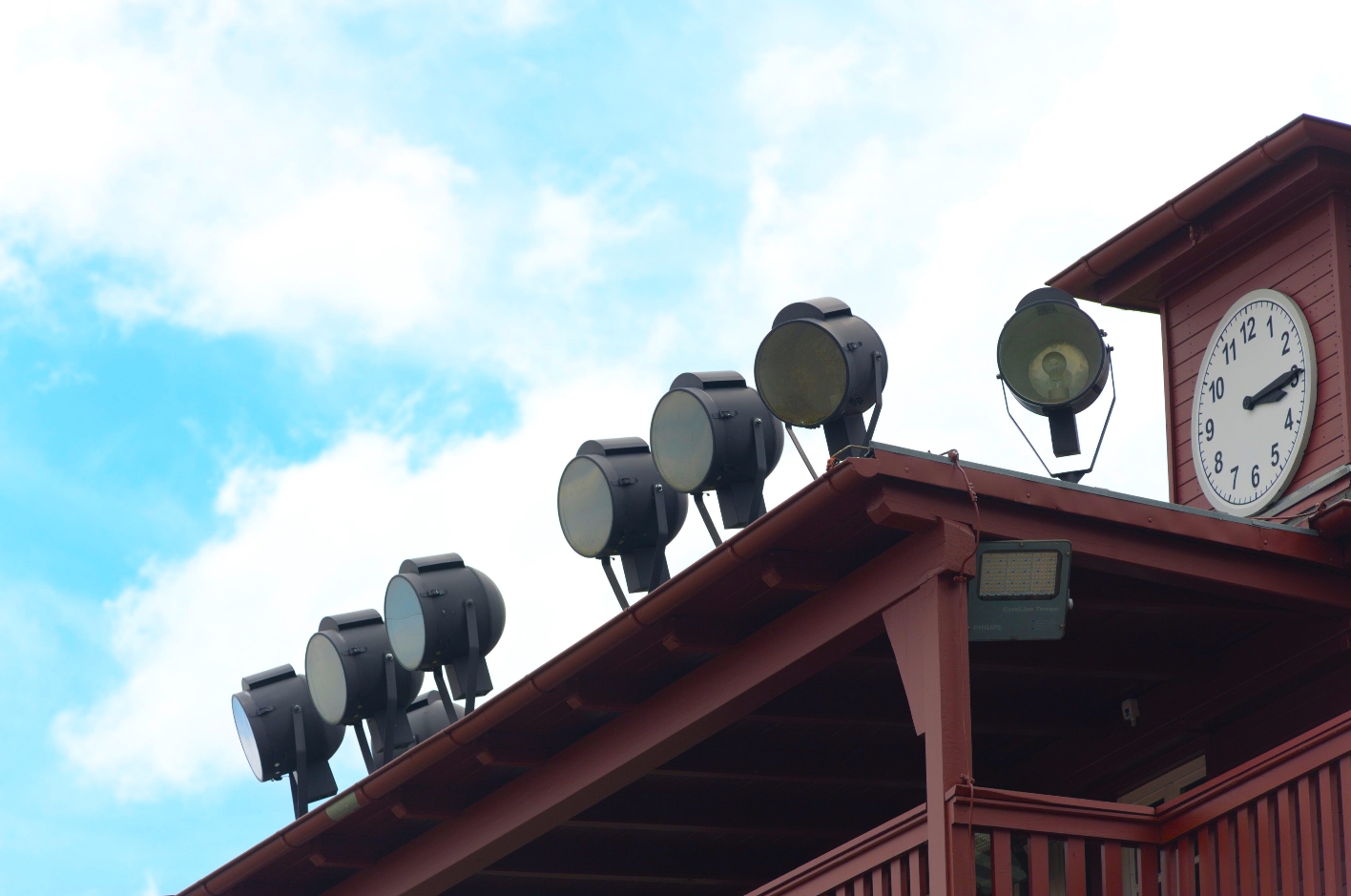

In the view of the GDR officials, the camp gate was not seen as a "gate to hell" but as a triumphal arch, in combination with the site of Ernst Thälmann's martyrdom. The tower clock is symbolically kept at 3:15, the time when four German political prisoners raised the white flag over the camp on April 11, 1945, to signal to the American troops that the SS had evacuated the camp. This simultaneous liberation from within and without was portrayed in the GDR as the "storming of the camp gate"—as described in the novel "Nackt unter Wölfen" (Naked among Wolves, 1958) by Bruno Apitz and in the eponymous film directed by Franz Beyer (1963)—and as a "self-liberation." The resulting myth served as historical legitimation for the SED's claim to power.

